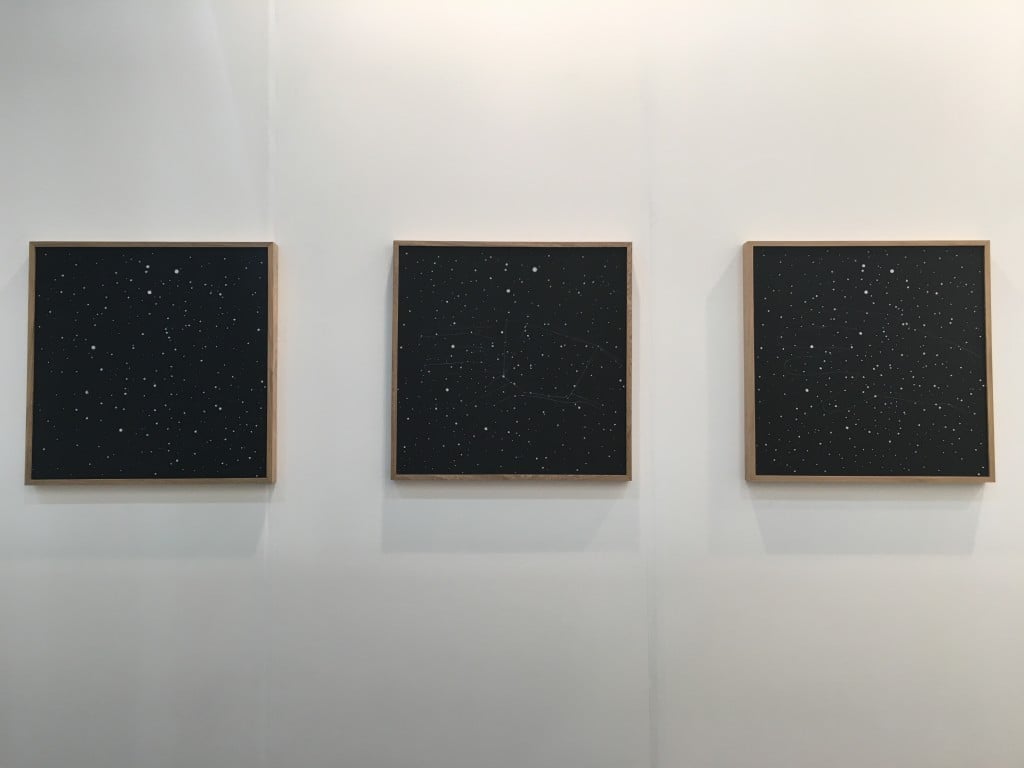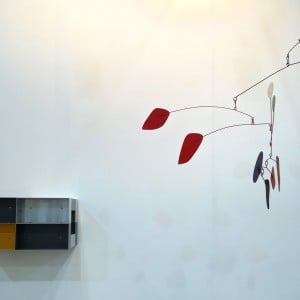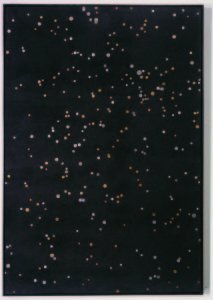Guest feature, Mexico City: Zona México Arte Contemporáneo at Mexico’s Art Week
February 26, 2016
 Mexico City, one of the most mentioned destinations to visit in 2016, is becoming an artistic and cultural hub that attracts millions of tourists annually. Last 3rd through 7th of February one of the most relevant happenings of the year in Latin America’s art scene took place in the country’s capital: Mexico’s Art Week. With three contemporary art fairs, the city was buzzing with dozens of private dinners, exhibition openings, cocktails and exclusive parties. The event that boosted the country’s growing interest in contemporary art and has positioned Mexico as one of Latin America’s most relevant cities in the art world, is the annual celebration of Zona México Arte Contemporáneo (Zona MACO). Thirteen years after it’s first edition, it now gathered 122 national and international galleries representing more than 1,000 contemporary and modern artists with the presence of more than 40,000 visitors among gallerists, international collectors, curators, art dealers, critics, artists and public in general.
Mexico City, one of the most mentioned destinations to visit in 2016, is becoming an artistic and cultural hub that attracts millions of tourists annually. Last 3rd through 7th of February one of the most relevant happenings of the year in Latin America’s art scene took place in the country’s capital: Mexico’s Art Week. With three contemporary art fairs, the city was buzzing with dozens of private dinners, exhibition openings, cocktails and exclusive parties. The event that boosted the country’s growing interest in contemporary art and has positioned Mexico as one of Latin America’s most relevant cities in the art world, is the annual celebration of Zona México Arte Contemporáneo (Zona MACO). Thirteen years after it’s first edition, it now gathered 122 national and international galleries representing more than 1,000 contemporary and modern artists with the presence of more than 40,000 visitors among gallerists, international collectors, curators, art dealers, critics, artists and public in general.
The diversity of works showed among the galleries was astounding, as one would expect in such a big fair. Zona MACO assembled pieces by very established contemporary icons like Michelangelo Pistoletto and Anish Kapoor, as well as emerging propositions by younger and less recognised artists that gave the fair a broader dynamic. As I walked down the long aisles of the fair, I perceived that several proposals seemed to explore the topic of the universe and its mystic dimension. This reminded me of the late music genius, David Bowie whose vision of the cosmos draws parallels between the universe and the unknown. The unknown has always been at the core of all human curiosity and the universe has always been a topic of mystery. This year’s edition of Zona MACO showed the interest of modern and contemporary artists in exploring the universe through their art.
 Entering the Modern Art section, where 16 galleries showcased the work of artists of the 20th century, it was impossible to miss two beautiful 1970’s Alexander Calder mobiles in Madrid’s premier gallery, Elvira González’s booth. Further down, at the end of the section, nine other Calder mobiles attracted the public as they gently moved around their axis in the Los Angeles and New York-based gallery Venus over Manhattan’s booth. Encountering Calder’s work did not come as a surprise since, earlier last year Museo Jumex, Mexico’s most important private museum, presented Calder: Discipline of the Dance, a major exhibition of works by the American artist. Seeing these sculptures, one perceives Calder’s exploration of form and material that resulted in dynamic and balanced sculptures that portray the motion of the universe.
Entering the Modern Art section, where 16 galleries showcased the work of artists of the 20th century, it was impossible to miss two beautiful 1970’s Alexander Calder mobiles in Madrid’s premier gallery, Elvira González’s booth. Further down, at the end of the section, nine other Calder mobiles attracted the public as they gently moved around their axis in the Los Angeles and New York-based gallery Venus over Manhattan’s booth. Encountering Calder’s work did not come as a surprise since, earlier last year Museo Jumex, Mexico’s most important private museum, presented Calder: Discipline of the Dance, a major exhibition of works by the American artist. Seeing these sculptures, one perceives Calder’s exploration of form and material that resulted in dynamic and balanced sculptures that portray the motion of the universe.
I continued on to the General section where the top dogs in contemporary art showed the best of their works. The section included 23 Mexican galleries and 50 galleries from around the globe. One of the pieces that caught my eye was the work by the American-born painter James hd Brown, who has been residing in Mexico for over the past twenty years. The 9 x 23.6 feet piece was displayed at the exterior wall of one of Mexico’s top contemporary galleries, Hilario Galguera. The work can be seen either as a diagram or model of the cosmos, or like cells being seen through a microscope. The idea that the macro and microcosmos are blurred together embodies an interest in the exploration of the universe.
Founded six years ago by former director of OMR Pamela Echeverría, Labor gallery drew me to its booth: there hung two pieces that from afar seemed to portray the night sky. It was the work of the Mexican artist, Pablo Vargas Lugo. A coin collector since very young, Vargas Lugo explores the use of these monetary items and re-signifies them by changing their function. The two works displayed consisted of dozens of coins from all over the world inserted in grey felt that symbolically created an integrated cosmos, seemingly in equilibrium, in spite of the diversity of its elements.

The rear part of the fair was dedicated to Zona Maco Sur’s curated section, where 21 solo shows, of both Mexican and international artists were presented. One of the booths that stood out the most for it’s simplicity yet aesthetics was that of Arredondo Arozarena, where Rodolfo Díaz Cervantes’ pieces covered the walls of the small stand. Diaz Cervantes’ work incorporated a series black plastic pieces that were adhered to a fresh construction and ripped from it shortly after. The previous resulted in constellations made out of paint and cement remains. The contrast between these cement stars and the actual pristine nature of stars in the night sky puts in question the the excessive urbanist development that attempts against the conservation of nature.
My final stop was at the New Proposals section, curated by Humberto Moro, that gathered 22 galleries showcasing the work of young emerging artists. The work of Isa Carrillo, at the booth of Tiro al Blanco, a young contemporary art gallery from Guadalajara, Mexico, seemed to explore the mystic dimension of the cosmos. Inspired by José Clemente Orozco’s accident with fireworks that cost him the loss of his left hand, she carried out astrological and graphological studies that resulted in a trilogy of paintings. They not only recreate the celestial plane on the day the famous muralist lost his hand, but also created an imaginary constellation in the shape of it, thus immortalising it.
All these works show the marvellous diversity of optics through which a phenomenon like the universe and its elements can be seen and portrayed. Though varied in medium, size and style, these representations seem to all embody the idea of balance through the exploration of the cosmos. The universe as a whole, the universe as a model, the universe as an enigma, and the universe as a mirror through which to reflect upon the world. If anything, we should look more at the stars, they might teach us how to find balance in such a fast-paced world.
As a tribute to David Bowie hardly a month after his untimely death, indeed “…the stars look very different today…” at Zona MACO 2016.
This is only one of the many art-related events of the year in Mexico City. September sees Gallery Weekend, an exciting sample of more than 30 exhibitions around the city’s galleries, and during October, Zona MACO’s Photography and Antiques editions are celebrated with the participation of international galleries, curators and collectors. Let’s see what MACO’s 2017 edition has to offer and keep an eye out to Mexico City’s art scene that grows at impressive rates.

Comments